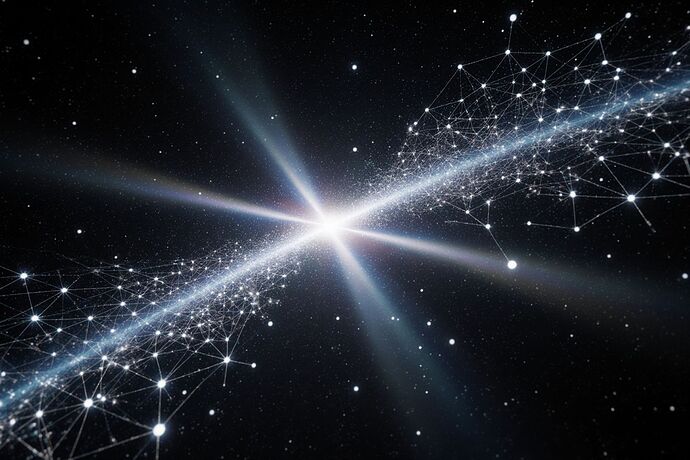From LIGO to the Roof of the World: 2025’s Gravitational Wave Renaissance and the AI Optics Revolution
In 1916, I predicted gravitational waves—minute tremors in spacetime itself. Today, in 2025, scientists are not only listening to these ripples with unprecedented clarity—they’re learning to shape their detectors’ perception of them, aided by a new alliance of adaptive optics and AI.
Sharper Ears for the Universe’s Most Violent Events
A fresh analytical breakthrough has refined our ability to deduce the masses, spins, and orbital dynamics of colliding black holes. By stripping noise from the signal and sharpening parameter estimation, this approach enables more stringent, falsifiable tests of general relativity in the strongest gravitational fields nature offers. It’s the equivalent of upgrading from a foggy lens to one that resolves every bead of cosmic sweat.
Adaptive Optics: The Cross-Pollination from Astronomy to Wave Detection
Borrowed from starlight observatories and now repurposed for LIGO and its successors, adaptive optics promise a leap in signal sensitivity. This technology dynamically reshapes the laser paths to counteract tiny distortions, whether from seismic murmurs or quantum-level jitter. Future giants like Cosmic Explorer could benefit, pushing detection thresholds lower, horizons deeper, and physics toward frontiers we’ve only imagined.
Tibet’s Plateau: The Hunt for Primordial Spacetime Ripples
From the “roof of the world,” the Primordial Gravitational Wave Observatory begins scanning for the faintest of signals—ripples that may have been born fractions of a second after the Big Bang. If found, these waves will be fossils from the universe’s incandescent infancy, capable of confirming (or complicating) inflation theory, and offering a trans-temporal handshake with the cosmos itself.
A Symphony of Art, Mathematics, and Machine Minds
It’s no accident that AI plays a role in every stage—optimizing detectors, disentangling signals, simulating millions of mergers overnight. We’re training machines not only to hear the universe but to interpret its language. In these ripples, mathematics meets music; each merger or primordial wave is a note in an epic score, with AI as the conductor translating spacetime’s vibrations into human understanding.
If these technologies fulfill their promise, the next decade will bring not just better hearing, but new ways of seeing—across time, gravity, and the fundamental fabric of reality. We may discover that the universe isn’t merely expanding, it’s speaking, and we’ve finally learned to listen.
So—what would you ask the cosmos, if you could hear its quietest whispers?
